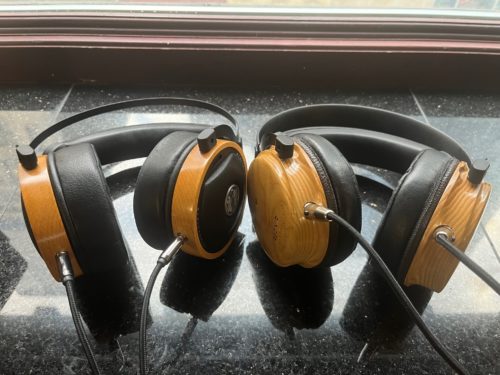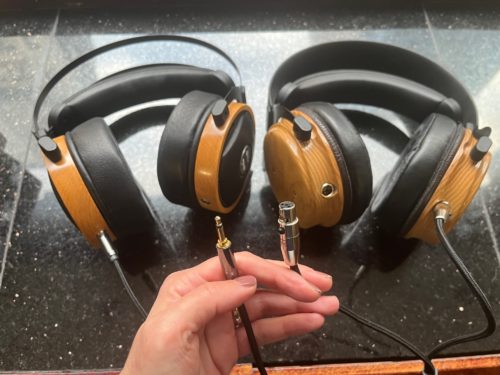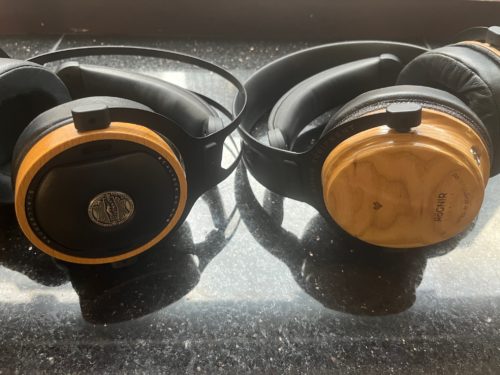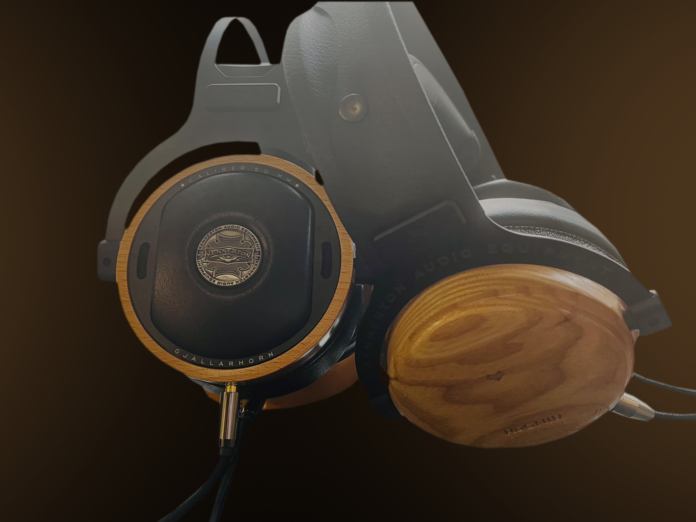Many audiophiles have become familiar with the Kennerton brand, which has grown significantly in popularity over the last year or two. The GH 50 is probably the Company’s biggest seller and has been competing with some of the more well-known headphones on the market in the $1000 range. But the slightly more expensive Rognir Dynamic is Kennerton’s flagship model, and it varies quite significantly in sound character from the GH 50. What differences and similarities can you expect between these two models? And which performs better?
Look and Feel
Listeners will enjoy the aesthetic and tactile pleasure of wood ear cups on both, the GH 50 JM and the Rognir Dynamic. However, while the Rognir Dynamic has an entirely wooden exterior, the GH 50 is finished with a plush leather at the center of the ear cup. The Rognir is slightly heavier than the GH 50, but the difference is unnoticeable when wearing them. One notable difference lies in the ear pads and clamping force. The Rognir has softer, contoured ear pads, and the headphone sits a little looser on the ears. In contrast, ear pads on the GH 50 are thicker and more firmly padded.


Design
Both headphone models sport 50 mm dynamic drivers, and both employ graphene membranes. However the OFC cables on the two models vary; the Rognir is designed with 4-pin mini XLR headphone connectors, while the GH 50 uses the standard 3.5mm connectors.

Both, the GH 50 JM and the Rognir Dynamic are easy to drive, at 33 Ohms and 32 Ohms respectively. But the Rognir Dynamic withstands a maximum input power of 500 mW, while the GH 50 JM handles up to 250 mW.
Sound Impressions
Soundstage
Although both headphones present a spacious soundstage, the Rognir Dynamic delivers more height and depth. Instruments placed in the rear sounded more behind the ears on the Rognir, while on the GH 50, they blended more into the stereo field. Imaging above the head also showed more elevation on the Rognir than it did on the GH 50.
Low-End
While both headphones have similar bass presence, the GH 50 presents a much wetter sound than the notably dry profile of the Rognir. The GH 50 also feels more extended. So, listening to hip-hop, for instance, you’ll hear more rumble from the GH 50. But both headphones show incredible speed and punch. Listening to strings and double basses, the GH 50 has real depth and gravitas, while the Rognir Dynamic sounds more moderate and natural. So, if you like a more resonant sound, you’ll gravitate towards the GH 50. But if you prefer a tighter, chalkier, almost dampened feel, the Rognir Dynamic certainly has that quality.
Mids
Both, the GH 50 and Rognir Dynamic have a relatively even balance in this range. But again, the GH 50 delivers much more shine than the comparatively dry Rognir. The GH 50 also has a brighter profile once it hits the mids. So, vocals and brass instruments, for example, sound more luminous on the GH 50. On the flip side, the Rognir is more forgiving and controlled in moments when the GH 50 runs into some sibilance. And the Rognir’s almost muffled snares deliver more impact. In terms of detail, the GH 50 and the Rognir show almost equal skill. However, listening to strings, the Rognir revealed slightly more texture and nuance in timbre. In contrast, the GH 50 painted a grander, more majestic instrument.
Highs
These are quite different headphones in the highs. The GH 50 is sparkly and glistening, while the Rognir Dynamic is less embellished, dropping the glitter and notable vibrancy of the GH 50. This makes the Rognir easier on the ears in this range, and again, makes it feel firmer and more contained or controlled. But they are both an equally fun listen when playing funk tracks, for instance, since both models are super fast. Finally, the Rognir again shows more breath and resolve with respect to acoustic instruments and vocals, proving it to be the more detailed headphone of the two models.
Summary
Although the Rognir Dynamic reveals a more dimensional soundstage as well as slightly more detail than the GH 50 JM, the difference is less based on skill than it is on personality. The GH 50 JM is vibrant and bold, with a deeper, more resonant low-end and significantly more sparkle in the highs. The Rognir Dynamic, on the other hand, has a far more muted and controlled quality that charms in a completely different way. In fact, its unique sound may make it the more memorable or charismatic headphone overall. Still, the GH 50 seems more ideal for modern genres like pop, hip-hop, and pop-rock, while the Rognir appears to shine most when presenting classical, folk and jazz music. But at the end of the day, both, the GH 50 and the Rognir are highly versatile headphones, and neither should disappoint the discerning audiophile.
You can buy the Kennerton Gjallarhorn GH 50 JM at Audio 46.
You can buy the Kennerton Rognir Dynamic at Audio 46.
Specifications
|
GH 50 JM |
Rognir Dynamic |
|
| Driver | Graphene Membrane | Graphene Membrane |
| Driver Unit | 50 mm | 50 mm |
| Frequency Response | 10-50000 Hz | 10-50000 Hz |
| Sensitivity | 116 dB | 116 dB |
| Impedance | 33 Ohm | 32 Ohm |
| Maximum Input Power | 250 mW | 500 mW |
| Cord length | 2 meters length detachable OFC cable is terminated with high quality gold plated 6.3 mm TRS connector | 2 meters OFC cable with 4-Pin Balanced mini-XLR connectors and Gold Plated 6.3 TRS connector |
| Weight | 406 g | 466 g |

Compare the ranking of various headphones, earbuds and in-ear monitors using our tools.
Discuss this, and much more, over on our forum.
---MAJORHIFI may receive commissions from retail offers.















